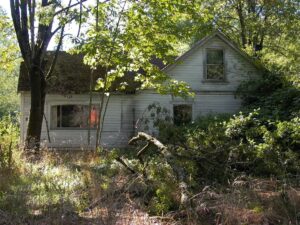
Tenants should recognize habitability issues that could jeopardize their health and safety, including:
✅ Faulty Plumbing – Persistent leaks, sewage backups, or lack of running water.
✅ Lack of Heating – Inadequate or non-functioning heating systems during cold weather.
✅ Pest Infestations – Roach, rodent, or bedbug infestations that create an unsanitary environment.
✅ Structural Defects – Unsafe flooring, walls, ceilings, or other damage making the unit dangerous.
✅ Mold or Water Damage – Excess moisture leading to hazardous mold growth.
These issues are outlined under California Civil Code §1941.1, which sets minimum habitability standards that landlords must follow.
If you’re dealing with an uninhabitable rental, follow these steps to protect your rights and ensure your landlord takes action:
It’s crucial to document all habitability issues and formally notify the landlord. Send a written notice via email or certified mail outlining:
The specific problems affecting your rental.
A request for repairs within a reasonable timeframe.
Any prior communications regarding the issue.
Landlords are required to fix serious habitability issues within a reasonable period. The exact timeframe depends on the severity of the issue, but urgent problems should be addressed promptly.
If the landlord fails to act, tenants have several legal options:
✅ Repair and Deduct – Tenants can hire a professional to fix the issue and deduct the cost from their rent, as long as the repair cost doesn’t exceed one month’s rent.
✅ Withhold Rent – In severe cases, tenants may temporarily stop paying rent until repairs are completed. Consulting an attorney before taking this step is recommended to avoid eviction risks.
✅ File a Lawsuit – Tenants may sue the landlord for damages, including:
Reduced rental value due to unlivable conditions.
Discomfort and distress caused by prolonged habitability issues.
Additional expenses incurred as a result of the landlord’s negligence.
If you are dealing with habitability issues in California, it’s essential to know your rights and take proactive steps. Keep thorough documentation of all communications with your landlord and seek legal advice if necessary. By understanding and enforcing your rights, you can ensure that your rental home remains safe and habitable.
💡 Need Tenant Assistance? If your landlord refuses to make necessary repairs, consider consulting a tenant rights attorney or contacting local housing authorities for support.
Legal Disclaimer: The information provided on this blog is for general informational purposes only and is not intended to be legal advice. While we strive to keep the information up to date and accurate, it may not reflect the most current legal developments. Nothing on this blog should be construed as creating an attorney-client relationship, and you should not act or refrain from acting based on any content without seeking professional legal counsel. If you have specific questions about your legal situation, consult a qualified attorney licensed in your jurisdiction.
(c) Loomerlaw.com 2025
Stay informed about our latest offers and news. Subscribe today to receive exclusive content and updates directly to your inbox!
